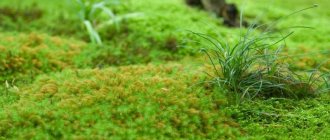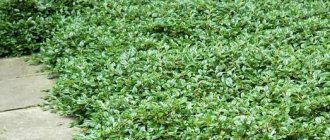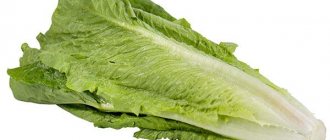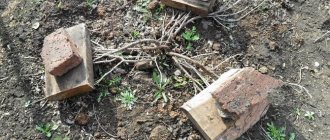The shrew is a very small mammal, weighing barely 10 g. However, small size in this case is by no means a hindrance to incredible gluttony. And it would only benefit the garden, since the basis of the diet is insect pests, and these “gluttons” are not interested in plant food.
But in search of food, a restless shrew can ruin crops in record time, digging tunnels, gnawing roots along the way and leaving earthen piles on lovingly grown lawns. How scary is this beast and how to fight it?
What kind of pest is this?
The large external resemblance to the field mouse misleads many, however, upon closer inspection, the difference is easy to see, especially since these two outwardly similar animals are not even relatives. The shrew is not a rodent, but an insectivorous mammal.
The head, large in relation to the body, has an elongated skull and a characteristic proboscis, sometimes slightly curved downwards - this is its main “calling card”. Short legs and fur, a long tail - everything else about them looks like a “decent” vole. The fur may be gray or light brown, depending on the variety.
The reasons why they choose this or that area are still unknown. They can either suddenly appear on it or go away for no apparent reason.
What plants does the shrew not like?
How else can a shrew be bred? How to fight it by planting certain plants? It is believed that this animal really does not like legumes and milkweed. Try planting more peas and beans in your area. Perhaps there will be fewer shrews after this.
In addition, ordinary marigolds are sometimes used to combat these animals. The plants are dried, finely ground and scattered before digging in beds, greenhouses and greenhouses. If you are afraid of using store-bought poison, you can try this remedy. It is believed that shrews do not like the smell of this plant. You can also try planting marigolds along the edges of the beds so that the animals do not enter them. This plant is absolutely not whimsical, does not require any care and, among other things, can become a good decoration for the site.
Common types
In total, there are about 350 species of these small mammals on the planet, but in our gardens you can most often find two species.
Pygmy shrew
There are names such as shrew and Etruscan little one. The coat color is gray-brown, closer to the gray palette. Very sharp teeth. Compared to other varieties, it is slightly larger in size, up to 7 cm. The tail is covered with sparse, but clearly visible villi.
Wood shrew or common shrew
The most frequent guest of dacha plots, where he comes from the surrounding forests. It is distinguished by a dark brown color with a transition to a lighter color on the abdomen. Grows no more than 5 cm.
It firmly settles into the territory it attracts, arranging nests or occupying empty mole holes. Having become accustomed to a place and being expelled from it, she often returns again, considering it her own patrimony.
Harm and benefit
It is impossible to say that this tiny mammal is definitely harmful to the garden plot.
The basis of their diet is insects harmful to crops, which they eat in huge quantities. The weight of the daily ration is 1.5-2 times higher than their own, and their gluttony is such that 6-7 hours of hunger can be fatal! In search of food, they are forced to move quickly and a lot, mostly underground.
On the one hand, this is an excellent help in soil aeration, but on the other hand, it is irreparable harm, since the animal gnaws all the roots it encounters along the way, without thinking and without intending to eat it. In addition, holes and earthen piles appear here and there on the surface of the soil, which can destroy a lawn that has been grown for years in record time.
Signs of appearance on the site
All obvious signs that this animal is taking over your garden or lawn completely coincide with the presence of other underground inhabitants - moles, voles, etc. The only exact fact of presence is a specimen seen in person. If you find not only underground passages, but also corroded tubers, you can definitely stop sinning against the shrews and shrews - they don’t eat it.
It often seems that a whole flock of these uninvited guests is operating at the dacha, but in fact it may be the only one, since it prefers a solitary way of living and hunting. Which, however, does not prevent her from bringing up to 14 offspring 1-2 times a year, which will become sexually mature in a month and it is not a fact that they will go far in search of their own territories.
These underground inhabitants settle near bodies of water, in swampy areas, under rotten stumps and other places with high humidity.
Repellent
The most humane, but, unfortunately, not the most reliable way. However, trying to get shrews to voluntarily leave an area is certainly worth a try.
Pungent odor
An excellent sense of smell compensates for this animal, like other underground inhabitants, for poor eyesight.
It is thanks to his sense of smell that he finds food. If you put something sharply smelling in the tunnels, it will not only scare away the animal (and at the same time moles), but also disorient it in its search for food. This could be a fish (head and entrails), which, as it decomposes, will exude a bad spirit onto all nearby underground “corridors”. A rag soaked in gasoline, kerosene or birch tar is also effective. You can sprinkle water on top of the hole and plug it with moss.
Garden repeller
Special devices designed to repel but not destroy pests have a different operating principle. Professional, highly effective repellers are a plastic or metal device equipped with built-in battery cells that resemble an inverted candle or wedge in appearance. These repellers need to be stuck into the ground throughout the garden. They produce a rhythmic, low-frequency sound that causes panic in underground animals (moles and shrews) and forces them to leave the area in a hurry.
Repeller
Such repellers are not cheap. And if you take into account that it is not enough to use one device for the entire territory, then purchasing repellers will be quite expensive.
Judging by the reviews of gardeners, Russian repellers have proven themselves well.
Capture and destruction by mechanical means
Traps and traps
Any mousetraps and traps designed for rodents and other pests (mice, moles, rats) are suitable. Any worms, larvae, etc. are suitable as bait for shrews. There is also a special trap installed directly into dug passages - SuperCat Vole Trap.
Help for cats and dogs
More hope in this regard, of course, rests on cats. Despite the fact that neither of them can stand the smell of shrews and do not eat them, they often catch them either for the thrill of the hunt, or simply by confusing them with ordinary voles. Hunters should be released into the area at night - this is the time of active movement of animals on the surface.
Preventive measures
It is absolutely impossible to protect a site from pests 100%. The animal is too nimble and active, constantly looking for food. Its tiny size makes it unnoticeable and does not attract attention. Traces of the activity of the uninvited guest are discovered only when they have multiplied quite a lot.
The problem will be solved by installing devices that will scare away voracious animals:
- It will help to plant plants that repel shrews with their smell and force them to move to a more favorable area;
- The simplest devices turn out to be quite effective in repelling rodents. Plastic bottles and cans do this job perfectly. Gusts of wind cause loud noise from the scarers and the shrews leave the area;
- Some plants are completely intolerant of small animals. These are beans, mint, wormwood, thyme. Planting these plants will reduce the risk of shrews entering the area.
Taking the problem seriously and choosing an effective means of combating it will do the trick. Many people prefer folk remedies, which are not always effective.
In practice, the most effective option is to install an ultrasonic or magnetic resonance repeller against rodents. It will help get rid of mice, moles, and shrews. Reviews about such devices are very good.
Particularly popular are appliances from the brands Tornado, Grad, Pest Reget, and Clean House. Using a repeller will preserve the crop and the integrity of the landscape. Shrews are harmful and useful at the same time. But too active reproduction of the animal is extremely undesirable, since getting rid of a large number of shrews is much more difficult.
Application of pesticides
The method is the most effective, but not always justified. We are talking not only about cruelty, but also about preserving shrews in nature for the benefit they bring, in order to avoid the massive spread of insect pests. In addition, other animals, including domestic ones, may accidentally eat the poison, since it will be very difficult to keep this process under control. You can find pesticides on sale in the form of food mixed with poison. They are more likely to attract pets than others.
When choosing pesticides, give preference to class 4 drugs as the least safe for humans and other animals.
Make sure that children do not get to the decomposed poison!
Asphyxiating drugs
One of the most famous and effective is “Hunter Anti-Rodent”.
The animal that feasts on it suffocates and dies. Another drug in this series is “Nutcracker” (it has the form of a thick substance and is considered the most effective among analogues). You can also find a product on sale called “Rat Death”, which we recommend using only as a last resort, since it causes a terrible and painful death in the animal due to suffocation and internal bleeding.
Gas bombs
To destroy the animals, they descend into the tunnels they have dug, through which the destructive gas spreads.
Folk recipes
Their undoubted advantage is their minimal cost, since folk recipes, as usual, are simple and involve the use of what is on hand in almost every home. It has already been said above about scaring off shrews with sharp and unpleasant odors - a method that is worth adopting.
A comprehensive method works best when several methods of struggle are used at once.
"Global flood"
We can only guess about the true length of the underground tunnels, since shrews often use other people’s “buildings.” Therefore, it is better to immediately take a hose with water and fill all the holes that appear in the nearby area. Not a single underground mammal can withstand such “swimming in its own home.”
Burnt rubber
The fastest way to wage an “olfactory” war. If you set fire to pieces of car or bicycle tires and stuff them into holes, their inhabitants will quickly leave their homes and go to seek their fortune in other places. Or they will simply suffocate.
Deep digging
The work is labor-intensive, but it can be combined with regular digging in early spring or after harvesting in the fall. Left “homeless,” the animals may move to a quieter place. But the word “possible,” as you understand, does not give a 100% guarantee.
Marigold
Shrews of all kinds are breathtaking with these flowers! If you plant them around the perimeter of the garden, not one of them will cross the cherished line. Safe, quite reliable and even beautiful!
And if you pick off the faded heads, dry them and sprinkle the plot with petals before the autumn digging, then those individuals that are already on the site will quickly leave the territory.
In a fight with shrews, you can use methods of varying degrees of reliability and humanity, but it is best to start with preventive measures. For example, annually plant flower and vegetable crops around the perimeter of the plot that are intolerable to these animals, but absolutely not superfluous on the farm. And if the problem has already happened, start with repelling it in order to preserve not only the landscape design, but also the balance in the surrounding nature.
Homemade traps
If you don’t want to spend money on buying ready-made traps, you can try making your own. To do this you will have to use the following options:
- Take a piece of small diameter pipe . Install shutters at both ends. They must function inward. As soon as the animal puts its nose into one of the gates, it opens its way a little until it hits another gate. This way, she won't be able to open a way out for herself and end up trapped.
- This design is considered the simplest . It's called a wire trap. It is necessary to install a spacer near the entrance to the hole. As soon as the rodent touches it, the fixation mechanism is activated. Now you only need to remove the caught rodents from the trap from time to time.
Video shows homemade shrew traps:
Do not think that shrews are harmless animals. If they are present in the garden, then you are unlikely to be able to grow a full-fledged harvest. But if you use the presented methods of fighting the animal, then there is a high probability that the rodent will be neutralized and leave the area for good.











